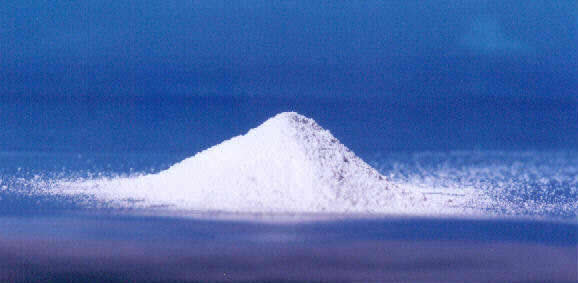
PTFE has an unmatchable profile of unique properties which make it one of the most valuable and versatile engineering materials available.

Properties of Pure PTFE
Total
chemical resistance:
- Can be used in the most corrosive environments
- Will not contaminate the most sensitive medium
...details
Completely insoluble with
high purity
- No contamination in ultra-pure or corrosive applications
- Very high intrinsic purity
...details
High thermal stability
- Working temperatures from -200 to +300°C
- Thermal degradation does not start until +400°C
- Does not melt to a liquid phase - an in-built safety feature
...details
Exceptional electrical
properties
- Extremely high electrical resistance
- Low dielectric constant and dielectric loss factor
- Does not support tracking
...details
Exceptional anti-adhesion
properties
- Lowest coefficient of friction of all solids
- Other materials exhibit little or no adhesion to PTFE
...details
Good flexural properties
- Outstanding resistance to fatigue
- No embrittlement in liquid helium
...details
[back to top]

Properties of Modified PTFE
Basic PTFE is a linear polymer of tetrafluoroethylene, CF2=CF2
Two co-polymers using perfluoropropylene-vinyl-ether (PPVE) as co-monomer
are commercially important, these are:
- TFM, a copolymer with about 0.1% PPVE
- PFA, a copolymer with 3 - 15% PPVE
TFM is essentially similar to PTFE but with reduced porosity, improved
tensile strength and a high degree of weldability.
PFA is a melt-processable
thermoplastic with similar chemical resistance to PTFE. It has much lower
porosity and is translucent.
FEP, Fluorinated Ethylene Propylene, a thermoplastic, is also a member
of this family and shows the high chemical resistance characteristic of
fluoropolymers along with excellent clarity.
[back to top]

Properties of filled PTFE
A range of fillers, typically glass fibre, carbon, graphite, metal
powders and molybdenum disulphide can be blended with PTFE resins, usually
in the proportion of 2 - 40%, to improve certain characteristics.
The incorporation
of fillers can:
- Increase compressive strength
- Improve thermal conductivity
- Improve abrasion resistance
- Reduce thermal expansion
- Reduce cold flow
- Impart electrical conductivity
It should be noted
that the use of fillers may downgrade other properties of PTFE such as chemical
and electrical resistance.
[back to top]

Technical Data
| Property |
PTFE |
TFM |
PFA |
FEP |
Polypropylene |
Appearance
Density ( g.cm-3
)
Melting Point ( °C )
Max. Service Temperature
( °C )
Chemical Resistance
Water
absorption
Hardness (Shore)
Tensile
Strength at 23°C (MPa)
Elongation at break (%)
Flammability
Electrical Resistance
(Ohms.m-1)
Cost Index
|
Ivory-white, opaque
2.15
327
290
Excellent
Nil
60
20-40
250-500
Non-flammable
1018
1.0
|
Ivory-white, opaque
2.15
327
290
Excellent
Nil
60
40
250-500
Non-flammable
1018
1.5
|
Translucent
2.15
305
260
Excellent
Nil
63-65
15-25
100-250
Non-flammable
1016
3.0
|
Transparent
2.14
270
205
Excellent
Nil
63-65
20-30
250-300
Non-flammable
1018
2.5
|
Translucent
0.9
160
140 Short
110 Long
Good except for HC and oxidising
agents
Nil
60-75
25-40
600
Ignites
on flame contact & will burn
1016
0.25
|
Figures
quoted are typical values
[back to top]
|
